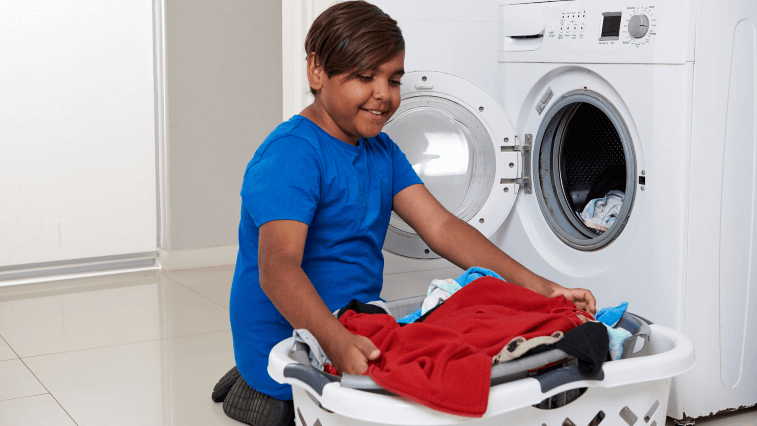In this article
- Practical ways to save water in the laundry
- How to choose a water efficient washing machine
- Installing a greywater system
Washing machines are typically the biggest water users in the laundry. While they require a lot of water, you can make a few simple changes to your washing routine to reduce the volume.
Load up the washing machine
Reducing your washing by just one load a week will save you up to 50L. It’s also a good idea to get into the habit of only running your washing machine when you have a full load.
Where possible, wash in cold water as this will also save energy. Use the eco or energy saver mode (if your machine has one) when you have several full loads on the go. This will also limit the amount of detergent required.

Need a new washing machine?
Older models can use as much as twice the water of newer models. If you’re in the market for a new or upgraded washing machine, look out for one with a WELS star rating of 4 or more. The more stars the appliance has, the more efficient it will be and the less water it will use.
To minimise your total running costs, you should select a model within your budget that is high in both water and energy efficiency.
Choose water efficient fittings
Go for WELS 4 star rated taps or install flow-controlled aerators. You can contact a Waterwise Plumber to help with installation.
Think you have a leak?
Leaking taps waste up to 10,000L per year! You can use our simple leak detection tool to check whether your laundry taps are leaking.
Fixing a dripping tap is usually as simple as replacing a washer.
Consider installing a greywater system
If you’re building a new home, you could save even more water and reduce your water bill with a greywater system.
What is greywater?
Greywater is the wastewater from washing machines, showers, baths, sinks, spas, and kitchens. Greywater from your laundry or bathroom can water your garden, provided it meets certain requirements.
Designing and installing a greywater system
Use a qualified greywater installer to design and install your greywater system. Not all greywater is suitable but a plumber can tell if yours is. They’ll also check the system performs efficiently and will be adequate for your garden.
Can I install a greywater system to my existing home?
It’s possible to retrofit a greywater system to your plumbing and garden layout. Speak to a greywater professional for advice on the right design for your property.
For more information download our greywater guide.

